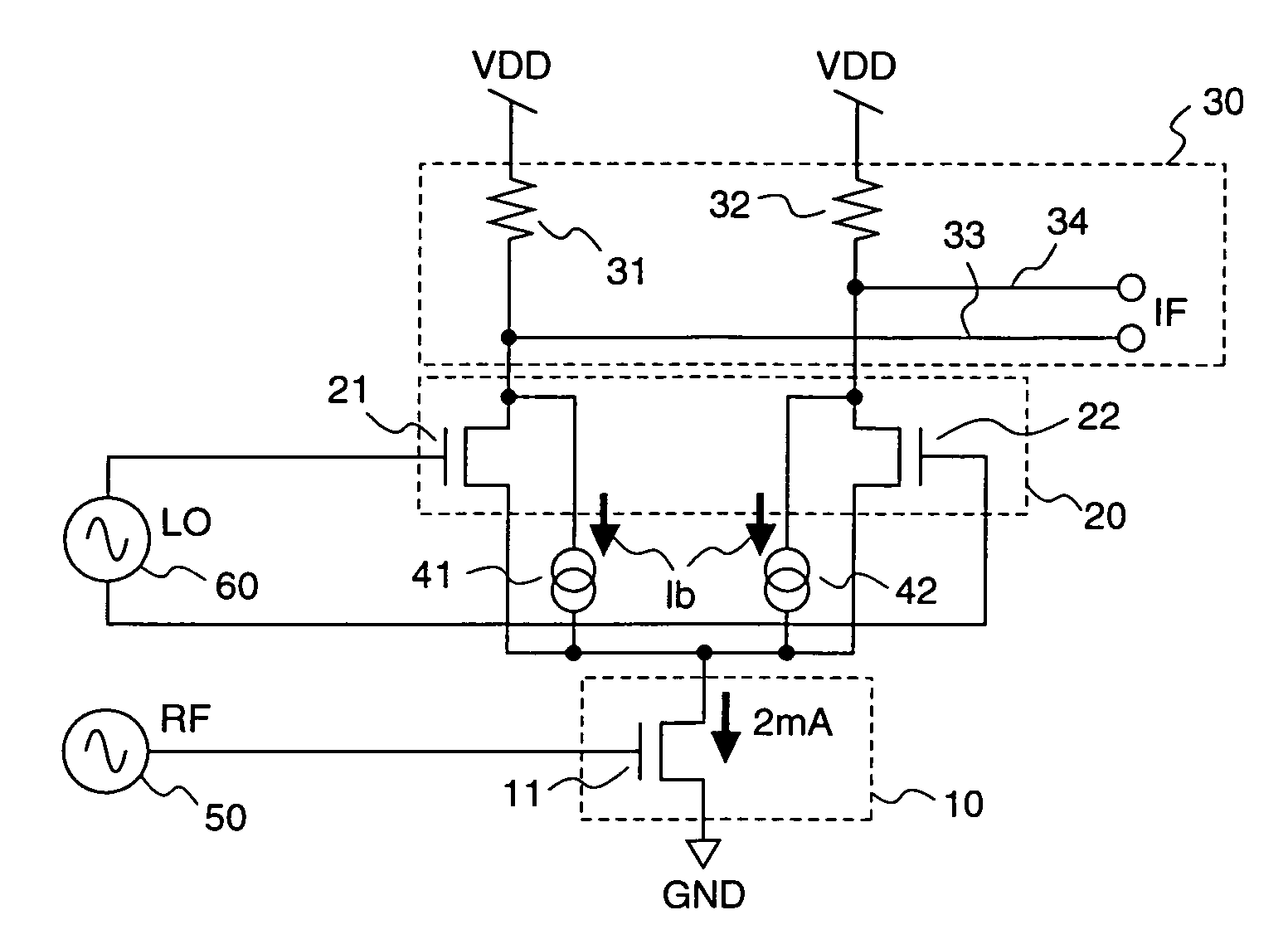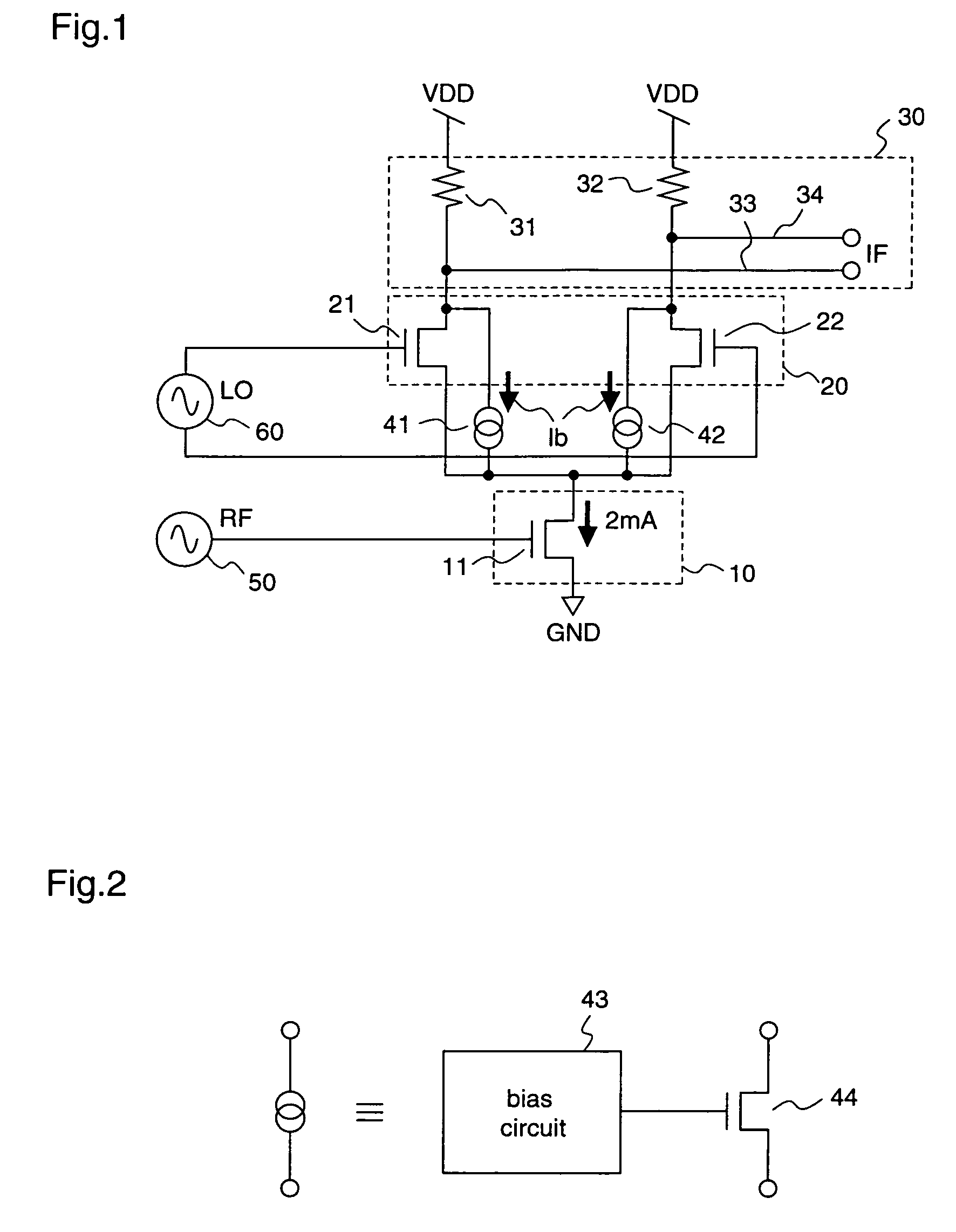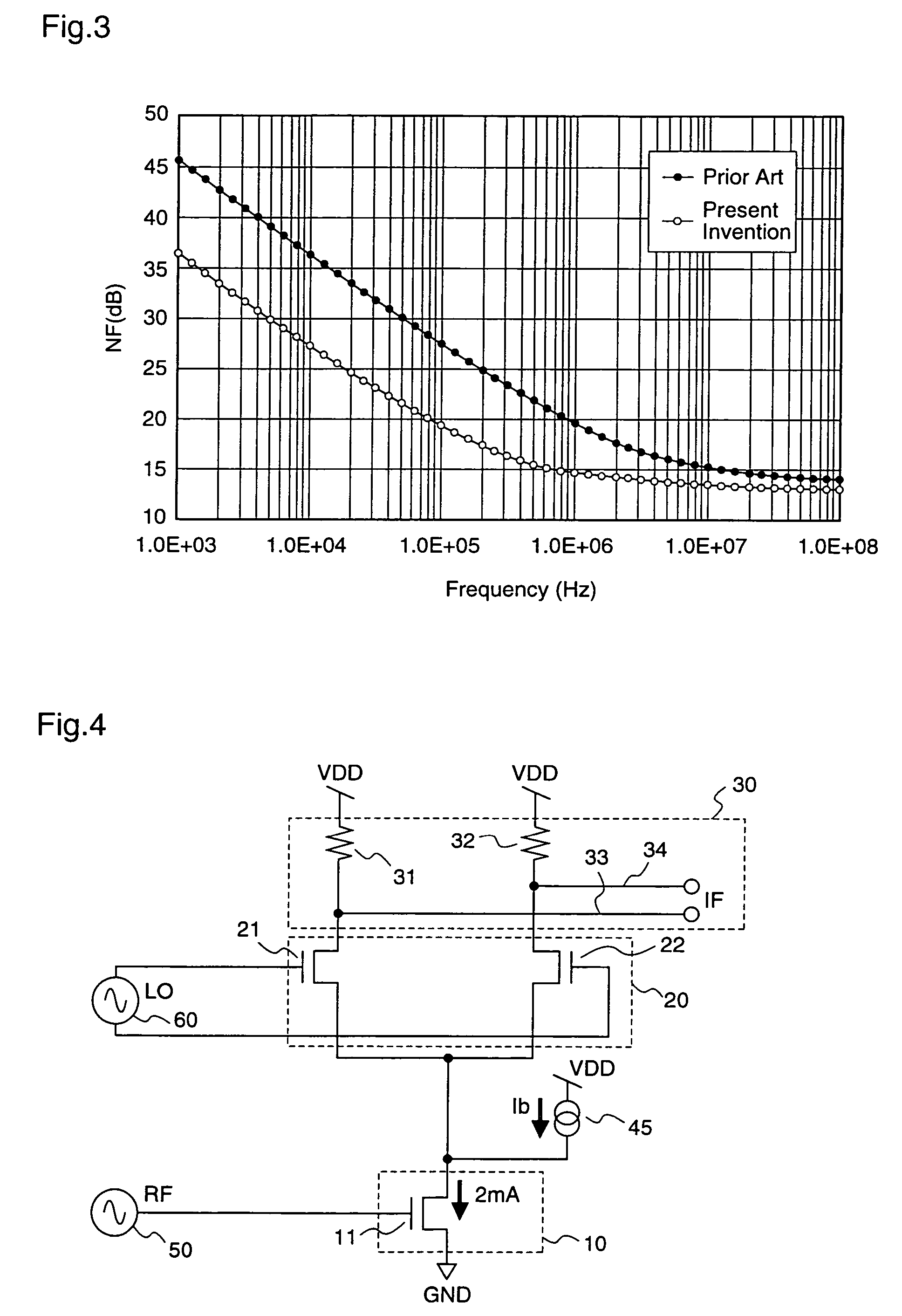Mixer circuit
a mixer circuit and low frequency noise technology, applied in the field of mixer circuits, can solve the problems of flicker, large deterioration of the reception sensitivity of the entire system, above-described methods of improving the low frequency noise characteristics of the mixer circuit, etc., to reduce flicker noise, improve noise characteristics, and reduce frequency
- Summary
- Abstract
- Description
- Claims
- Application Information
AI Technical Summary
Benefits of technology
Problems solved by technology
Method used
Image
Examples
embodiment 1
[0133]FIG. 1 is a circuit diagram illustrating a structure of a mixer circuit according to a first embodiment of the present invention.
[0134]As shown in FIG. 1, the mixer circuit according to the first embodiment has a basic structure of its mixer core part which is constituted by a single balanced mixer, and includes a single balanced mixer which is obtained by connecting an IF signal output load portion 30, an LO signal processing portion 20, and an RF signal processing portion 10 in cascade connection between a power supply VDD and a ground GND, an RF signal supplier 50 for supplying an RF signal to the RF signal processing portion 10, an LO signal supplier 60 for supplying LO signals to the LO signal processing portion 20, and first and second bypass current sources 41 and 42 which make bypass currents bypass the LO signal processing portion 20 with being connected in parallel with the LO signal processing portion 20.
[0135]The IF signal output load portion 30 includes a first lo...
embodiment 2
[0151]FIG. 4 is a circuit diagram illustrating a construction of a mixer circuit according to a second embodiment of the present invention. In FIG. 4, the same or corresponding parts as in FIG. 1 are denoted by the same reference numerals, and their detailed descriptions are omitted.
[0152]As shown in FIG. 4, in the mixer circuit according to the second embodiment, a first bypass current source 45 is connected between the power supply VDD and the drain terminal of the RF transistor 11, so as to additionally supply a bias current only to the RF transistor 11. The first bypass current source 45 is covered by a bypass current supply portion described in claim 7.
[0153]The first bypass current source 45 may be, for example, one which includes the bias circuit 43 and the current source transistor 44, as shown in FIG. 2. Further, it may generate bypass currents by any elements or circuits which realize constant current source characteristics.
[0154]The operation of the mixer circuit accordin...
embodiment 3
[0165]FIG. 6 is a circuit diagram illustrating a structure of a mixer circuit according to a third embodiment of the present invention. In FIG. 6, the same or corresponding parts as in FIG. 4 are denoted by the same reference numerals, and their detailed descriptions are omitted.
[0166]As shown in FIG. 6, the mixer circuit according to the third embodiment includes, in addition to that the mixer circuit of the second embodiment of the present invention is provided with the first bypass current source 45 that additionally supplies the bias current only to the RF transistor 11, further a second bypass current source 46 that is connected between the first IF output terminal 33 and the ground GND thereby to additionally supply a bias current only to the first load resistor 31, and a third bypass current source 47 that is connected between the second IF output terminal 34 and the ground GND thereby to additionally supply a bias current only to the second load resistor 32. The first to thi...
PUM
 Login to View More
Login to View More Abstract
Description
Claims
Application Information
 Login to View More
Login to View More - R&D
- Intellectual Property
- Life Sciences
- Materials
- Tech Scout
- Unparalleled Data Quality
- Higher Quality Content
- 60% Fewer Hallucinations
Browse by: Latest US Patents, China's latest patents, Technical Efficacy Thesaurus, Application Domain, Technology Topic, Popular Technical Reports.
© 2025 PatSnap. All rights reserved.Legal|Privacy policy|Modern Slavery Act Transparency Statement|Sitemap|About US| Contact US: help@patsnap.com



